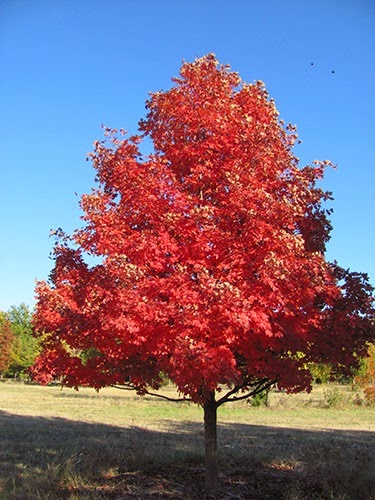IDK:Wheat Head Armyworm
By Sandra L. Wick, Post Rock Extension District Agriculture Agent – Agronomy
What is causing the insect damage in the wheat kernels this year?
Well, we are thankful for the moisture for our row crops along with our ponds and pastures, even though it slowed down the wheat harvest. The good report is that some of the wheat is better than expected, but for the most part, reports are coming in that wheat around the district is dependent on where “mother nature” put the moisture. The yield ranges are all over the board.
You may have heard about the wheat crop having some "insect damage kernels", also known as "IDK" coming into the elevators. The culprit for the damage is the wheat head armyworm. This armyworm actually overwinters in the pupae stage in Kansas and emerges as adult moths in the spring to lay eggs on a wide variety of grasses, but they highly prefer wheat. Unlike the true armyworm, there is more than one generation per year, but it is the first generation of larvae that feeds on maturing wheat heads and causes direct damage to kernels. Fall flights of adults moths of the wheat head armyworm, can be observed well into October and it is not clear if a portion of these represent a third generation, late-developing second generation individuals, or some combination of both. Larvae that complete feeding on maturing warm season grasses in the fall pupate in the ground, but remain dormant until the following spring. Formerly an occasional pest, this insect has become more of a consistent problem over the past five years, although the reasons for this are not clear.
 |
|
Larvae feed on the wheat heads from evening to early morning,
typically
hanging onto the awns upside down and hollowing out The kernels
.
|
The adult moth is yellowish brown with a chocolate-colored stripe down the length of each forewing. The larvae vary in coloration from greenish to cream-colored, depending on the maturity of the grain they have consumed, but all have longitudinal white and brown lines down each side of the body. Larvae feed on the wheat heads from evening to early morning, typically hanging onto the awns upside down and hollowing out kernels. They rest in the soil at the base of the plant during the day. Damaged kernels appear hollowed out and resemble those damaged by stored grain pests.
The wheat head armyworm, is usually a minor pest of wheat in most years, but occasionally can cause noticeable crop injury. Unfortunately, the first indication of a wheat head armyworm problem is often when wheat is downgraded at harvest because of insect-damaged kernels, or when larvae are noticed on grain screens at elevators. Damage to kernels by the wheat head armyworm is difficult to distinguish from that of certain stored product pests and can be classified ‘IDK’ (insect damaged kernels).
 |
| Larvae are greenish to cream colored with longitudinal lines on both sides of their body. |
The farmer is at risk of having wheat downgraded if a load contains more than 10 "insect damaged kernels", or IDK, per 100 grams upon delivery to the elevator. The problem is caused by 'tunneling' of wheat kernels by the young wheat head armyworm larvae that leaves many kernels partially consumed and with damage that is superficially indistinguishable from that caused by stored product pests. Ironically, it is not the damage to the kernels that is the true concern, but the relationship between damaged kernels and finding insect fragments in the grain. IDK caused by stored product pests such as lesser grain borer and weevils tends to correlate well with contamination of the wheat with parts of these insects. These pests feed inside the wheat kernels and thus can be hard to remove from the grain prior to milling leading to insect fragments in flour, but this is not true for wheat head armyworms that are external feeders.
There are no established management plans for this pest. Infestations are usually concentrated around field margins so scouting efforts for this pest would need to include interior parts of the field to obtain a representative estimate of population levels. In addition, no economic threshold has been determined. There are no materials specifically labeled for this pest, but materials registered for other armyworms in wheat would likely provide control if applied sufficiently early. However, unless detected well in advance of crop maturity, treatment would be impractical because the pre-harvest interval requirement of most insecticides would cause even greater losses due to delayed harvest.
For additional questions on wheat insect management, contact any Post Rock Extension District Office in Beloit, Lincoln, Mankato, Osborne or Smith Center.
Post Rock Extension District of K-State Research and Extension serves Jewell, Lincoln, Osborne, Mitchell and Smith counties. Sandra may be contacted at swick@ksu.edu or by calling Smith Center, 282-6823, Beloit 738-3597, Lincoln 524-4432, Mankato 378-3174, or Osborne 346-2521. Join us on Facebook now at “Post Rock Extension”. Also remember our website is www.postrock.ksu.edu.







